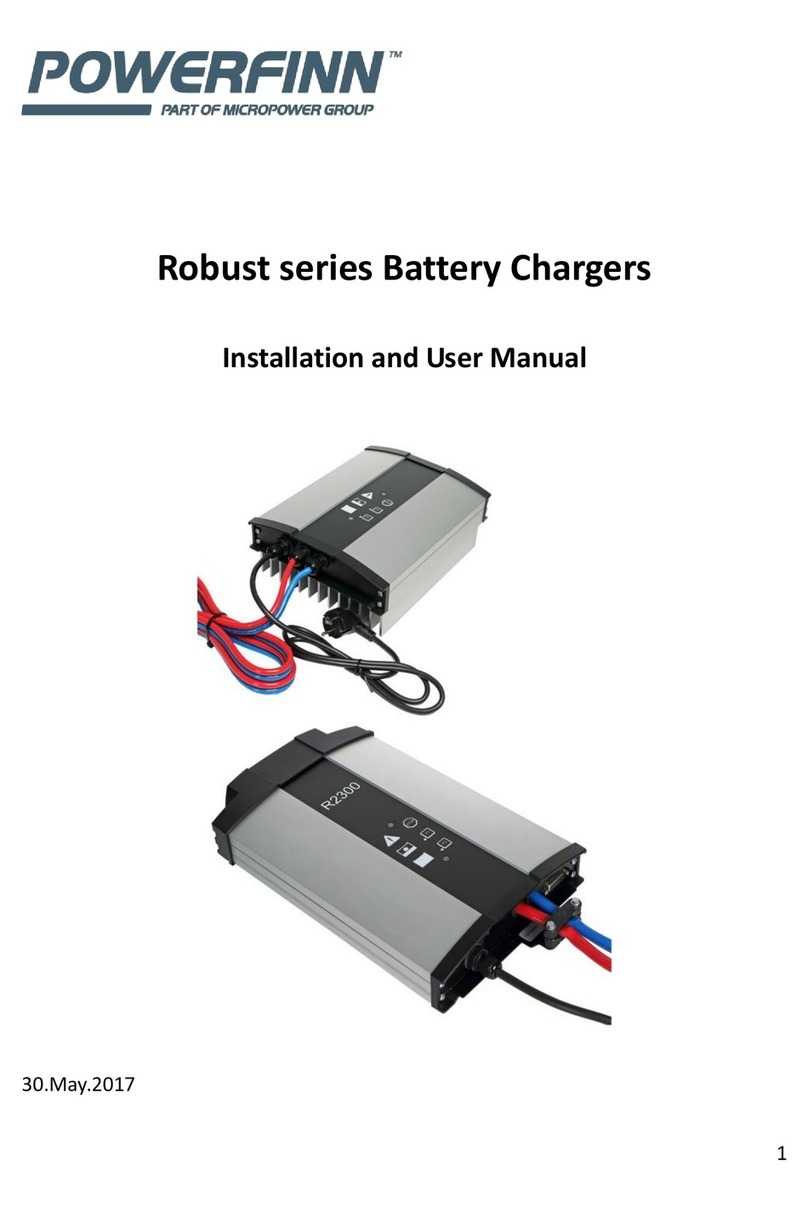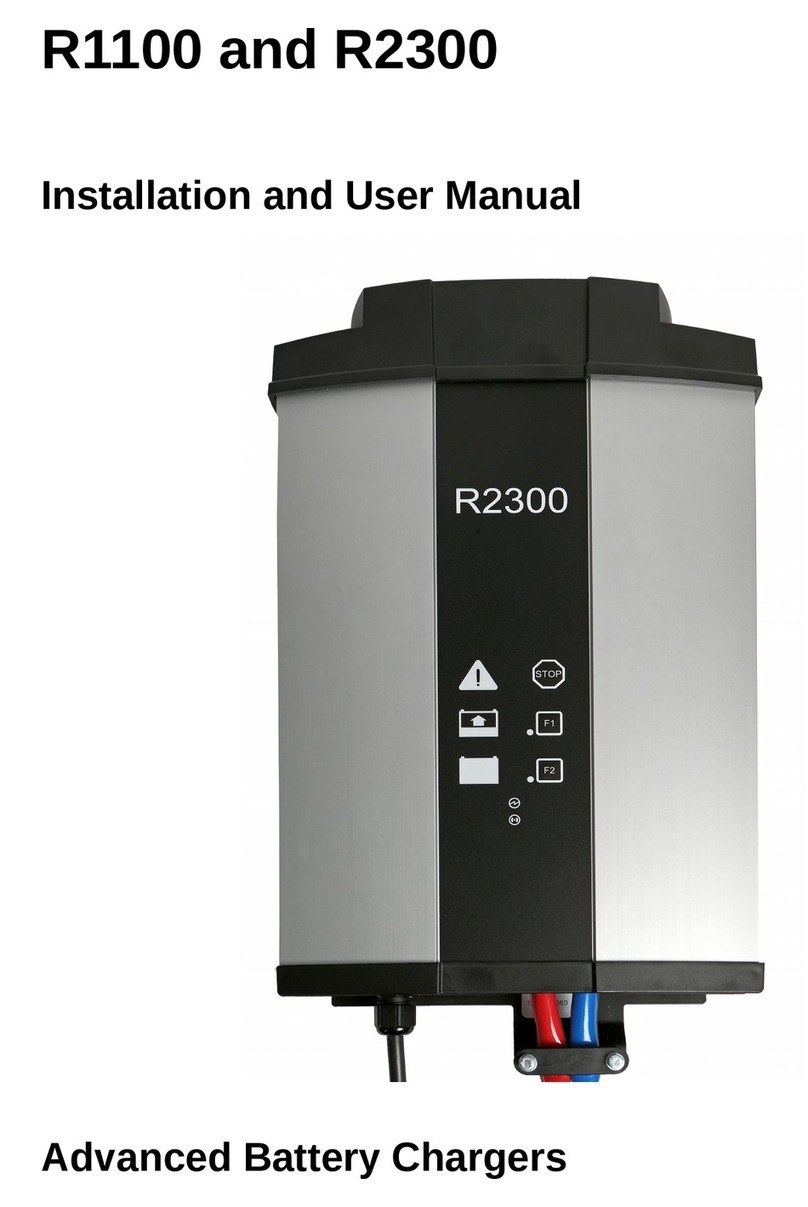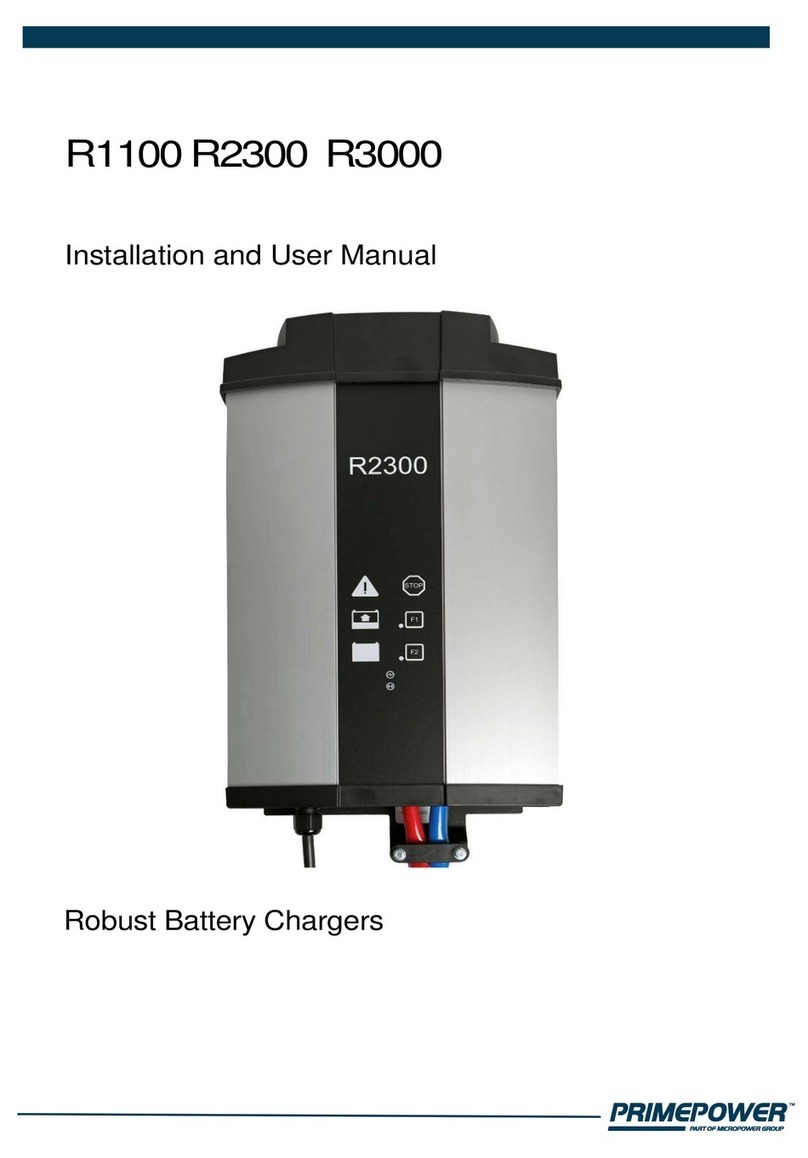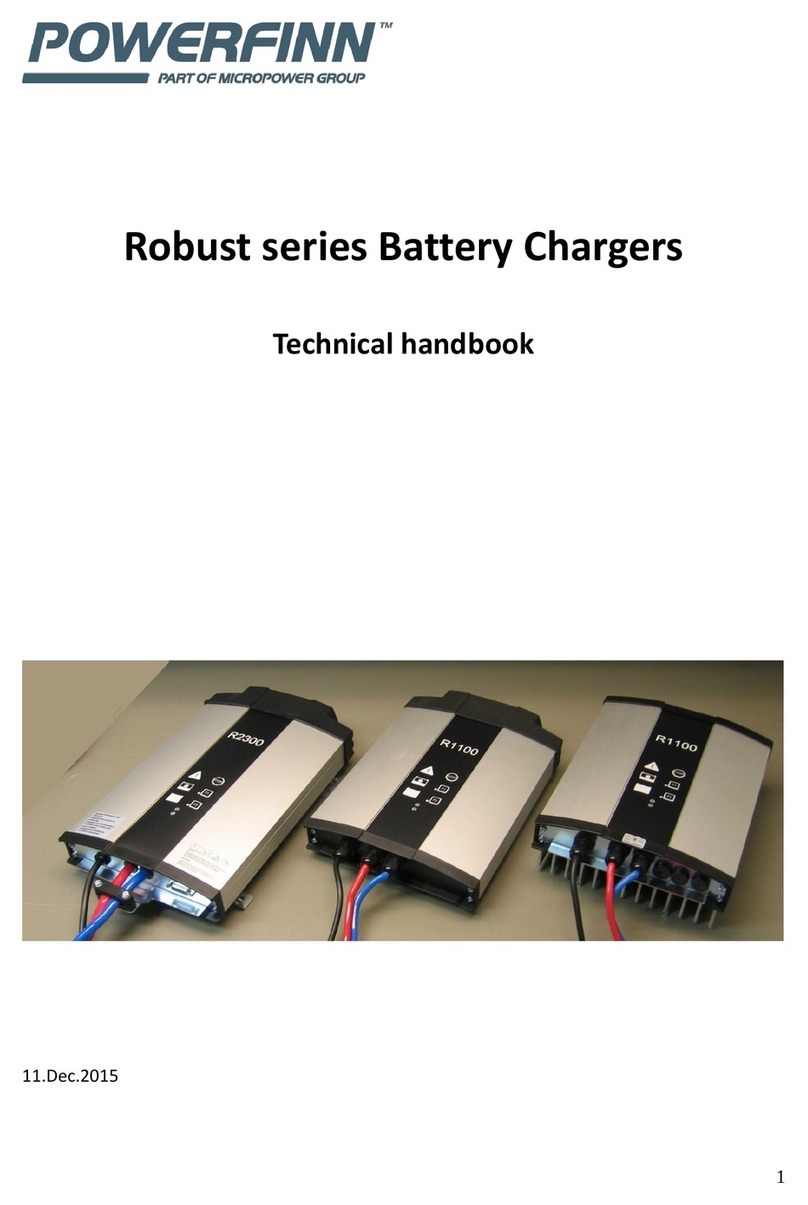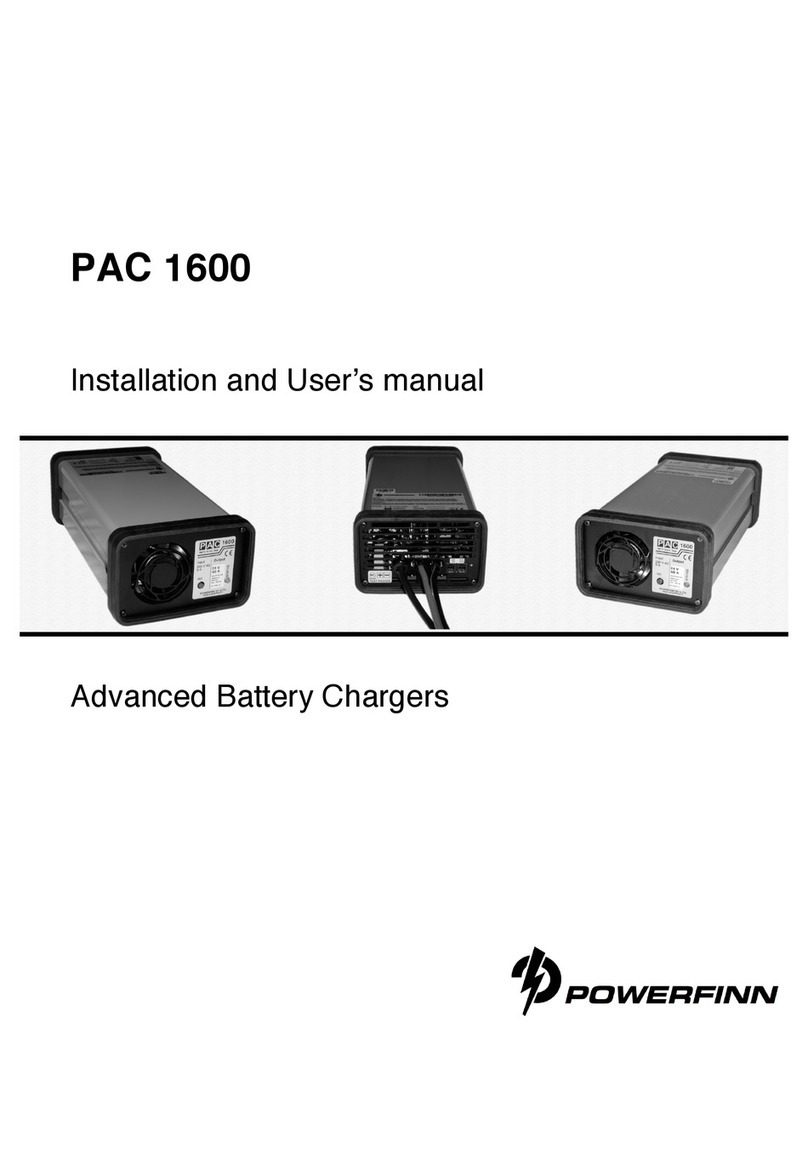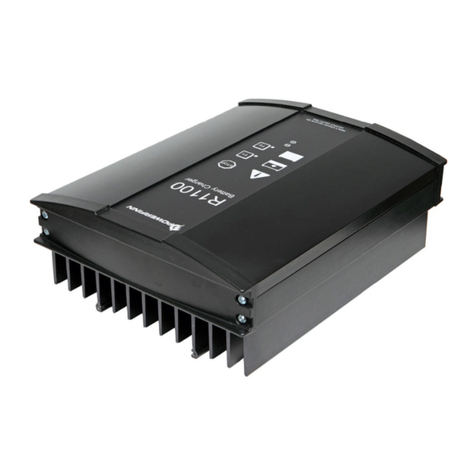Read these operating instructions before using the charger for the first
time.
Read the safety instructions in the next paragraph thoroughly
.
To charge a battery with the PAC charger, follow these instructions:
1. Ensure that the charger is disconnected from the mains and that the
work environment meets the conditions described in the previous
paragraph.
2.Connect the charger cables to the battery terminals: the positive (+)
cable to the positive (+) terminal and the negative (–) cable to the
negative (–) terminal. The positive cable is red and has a yellow cable
marker with a + symbol. The negative cable is black. The positive
battery cable is commonly marked with red.
Warning: Because some sparks can occur when the cables are
connected to the battery, the battery should be placed as far from the
charger as possible and the charger’s cables extended to reach the
battery.
3. Turn the power on by plugging the power cord in a mains outlet with
protective earth. The fan will operate when the charger is turned on.
The charger continuously monitors its own temperature level and
reacts by controlling the charging current and fan speed. The charger
will not overheat under normal conditions.
4. Go to step 7 in case the charger is programmed for constant voltage
charging.
5. During the charging process the STATUS LED will continuously light
orange. A constant red color indicates either a too low or too high
voltage, or that the battery is not connected to the charger. Turn the
power off by disconnecting the charger from the mains and make
sure that the battery is suitable for the charger. The battery voltage
should be 8-16V for a 12V charger and 16-32 V for a 24V charger.
Check the cable connections and return to step 3.
6. The battery is fully charged, as soon the STATUS LED is green.
7. The charger will switch to maintenance charging about 16 hours after
beginning to charge the battery. The process will terminate and the
STATUS LED will flash intermittent red in case the battery is not fully
charged after PAC switches to maintenance charging. This may occur
if the battery is defect, or if the charger and the battery are
incompatible (see page 2 ‘General’).
8. Step 8 applies only to chargers programmed for constant voltage
charging. During the charging process the STATUS LED lights
continuously orange. The charger does not check the cable
connections and starts charging immediately after the power is

